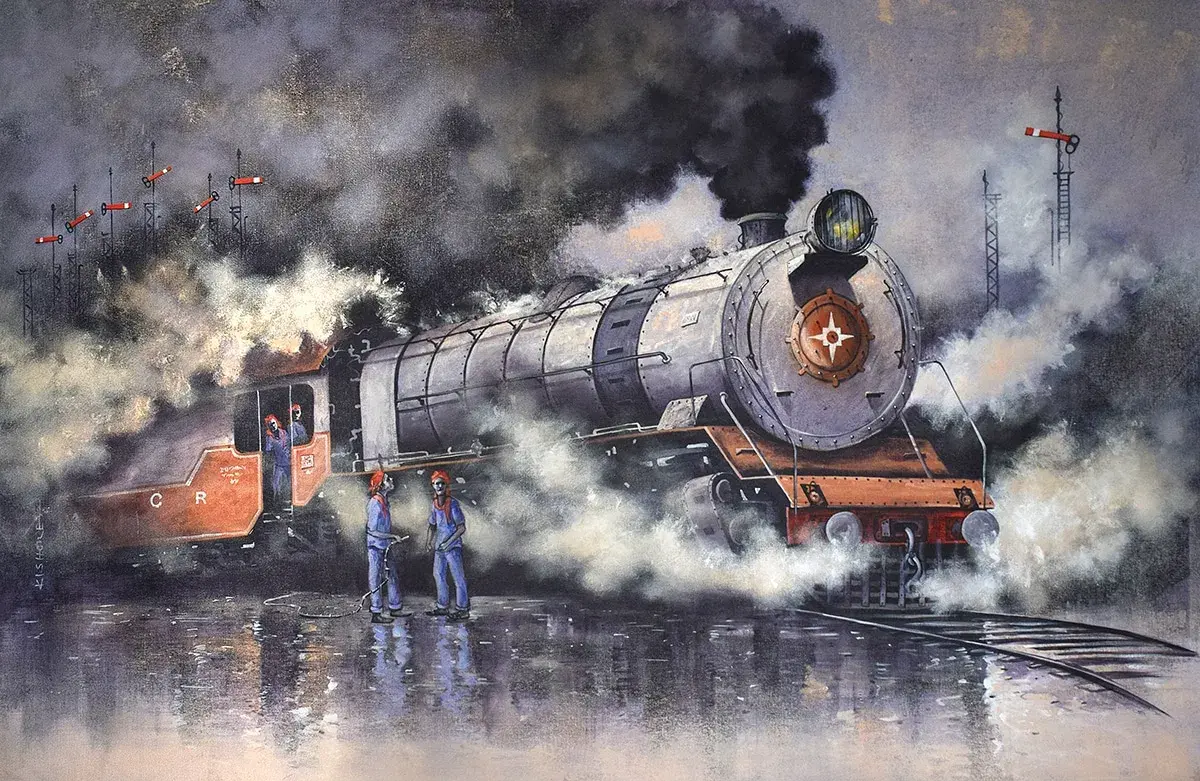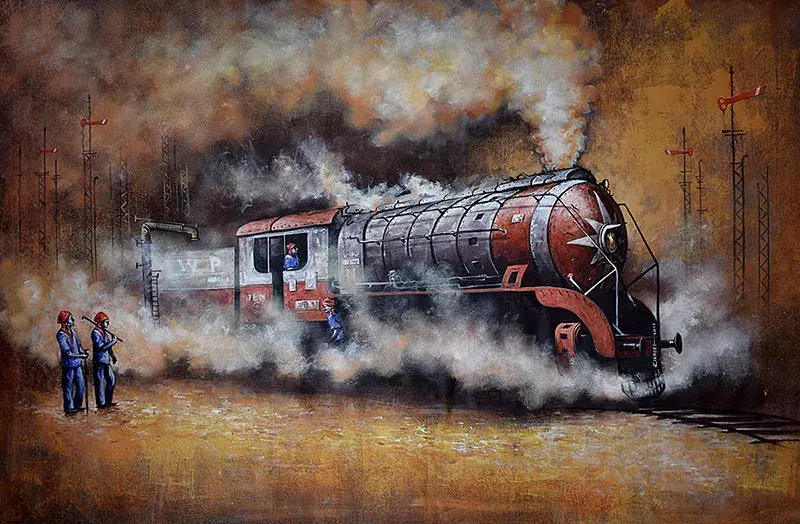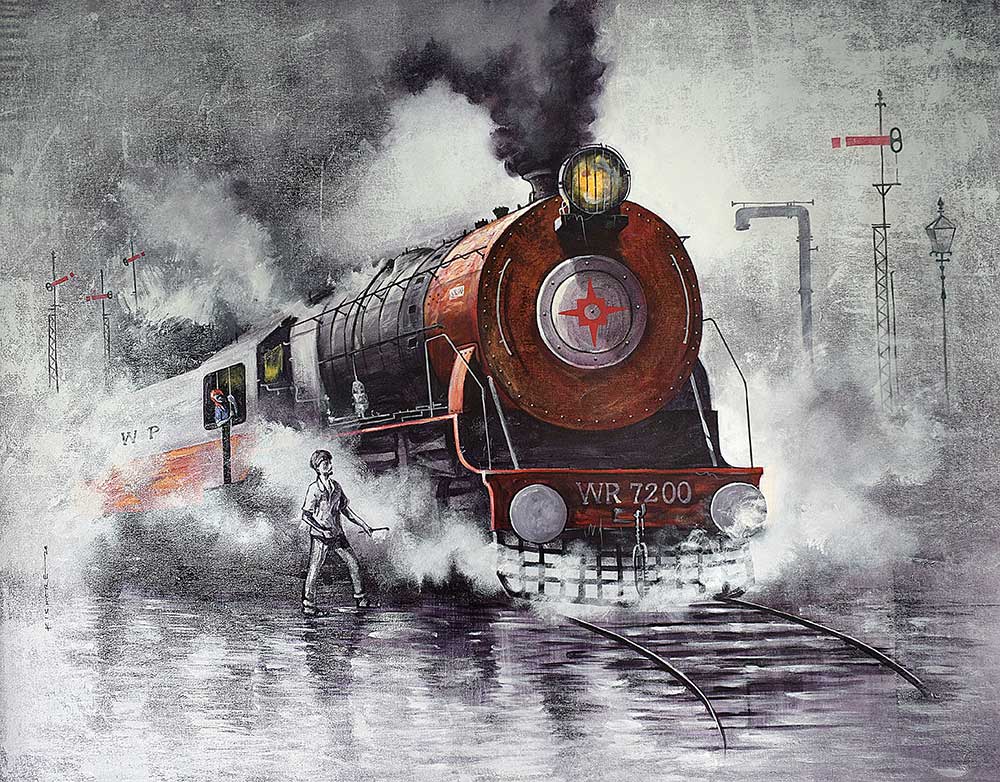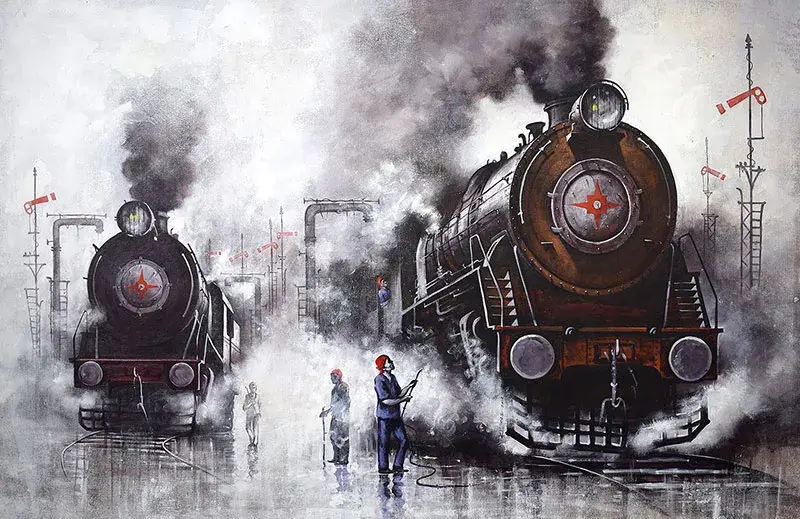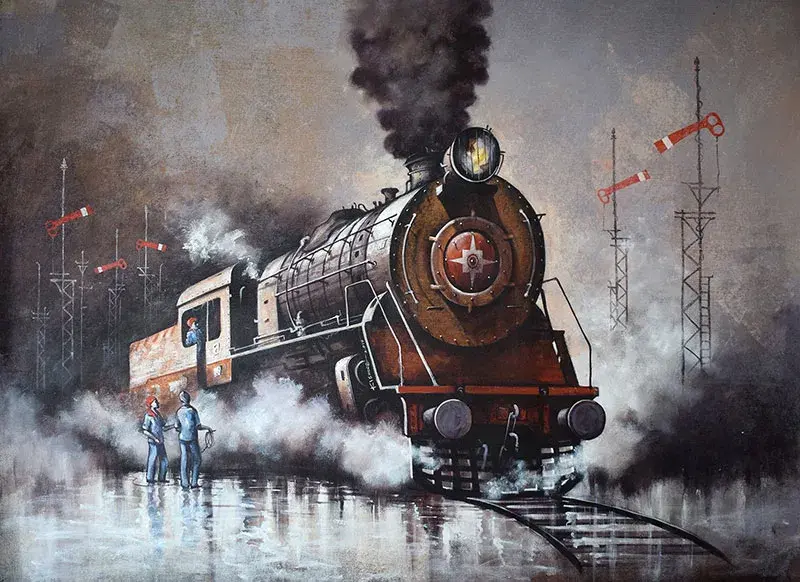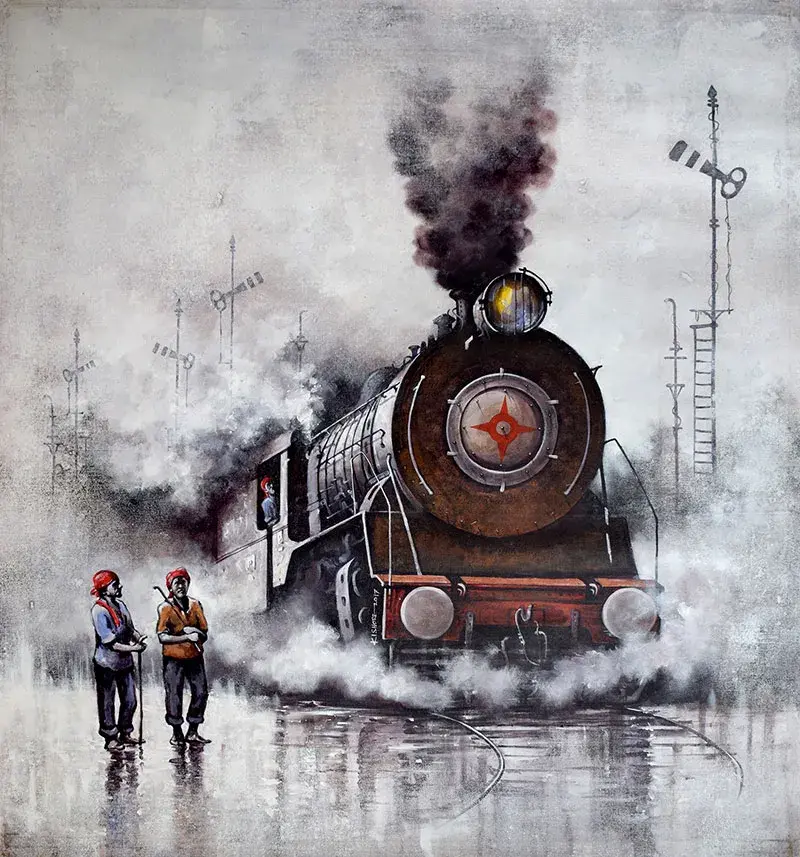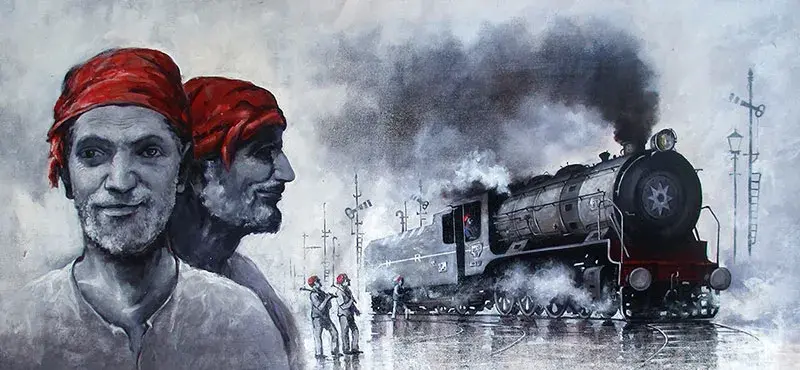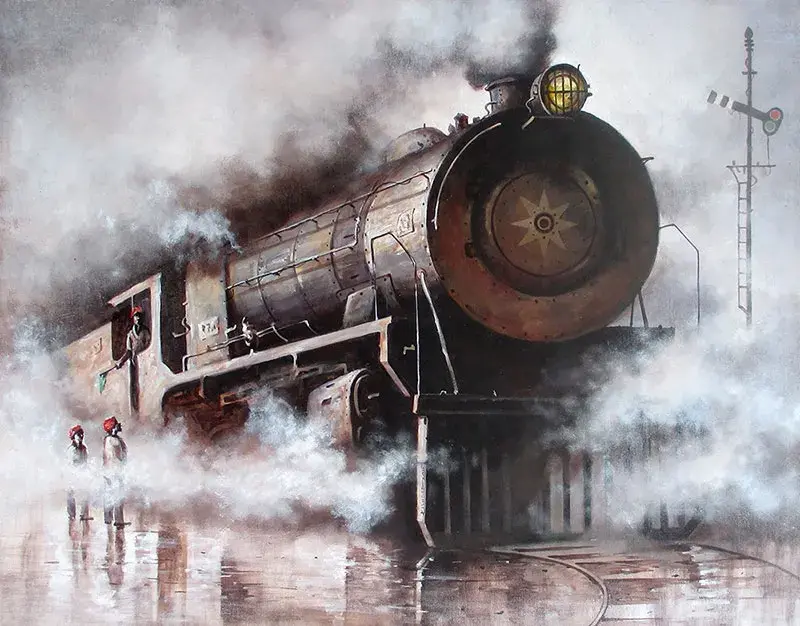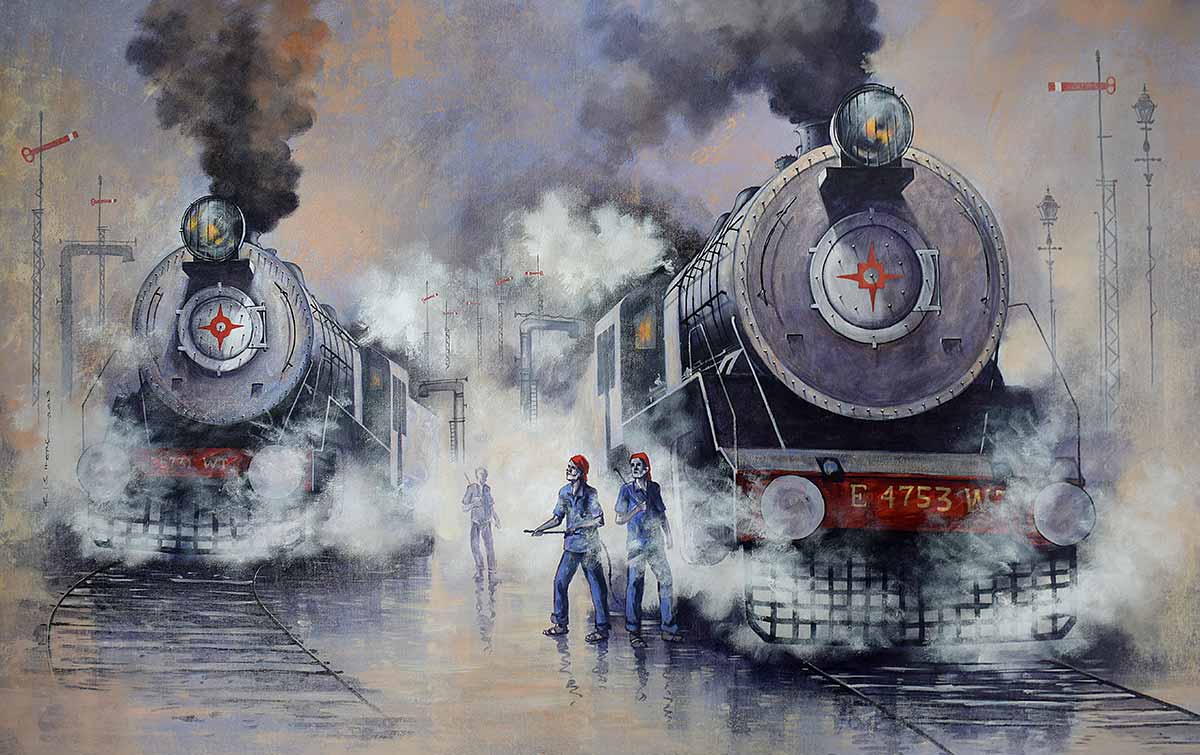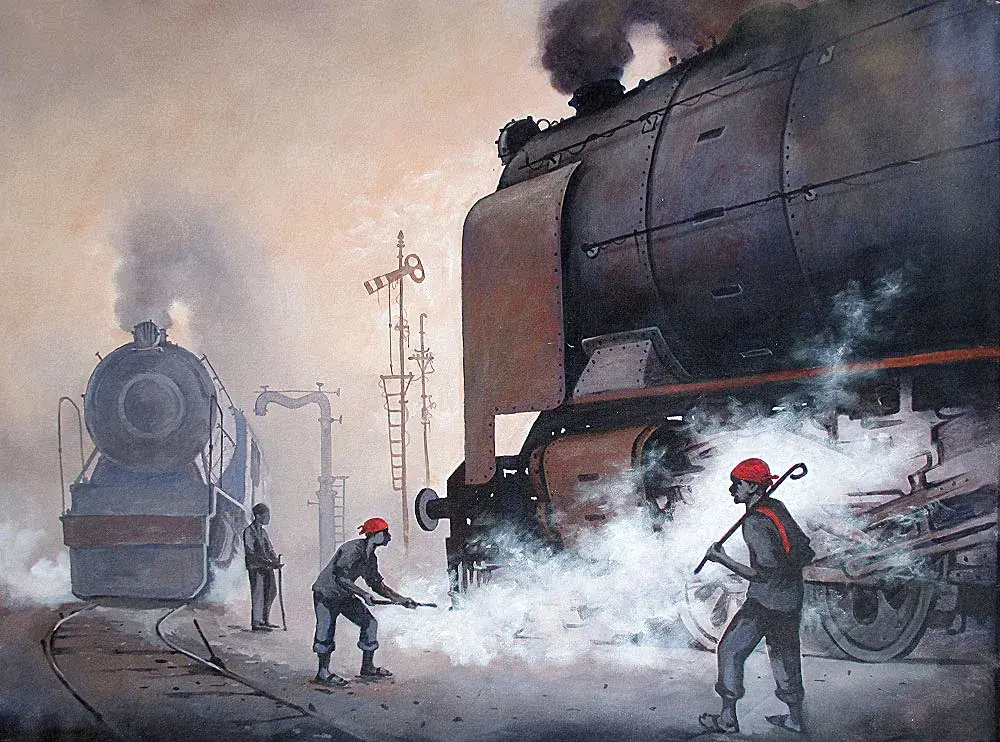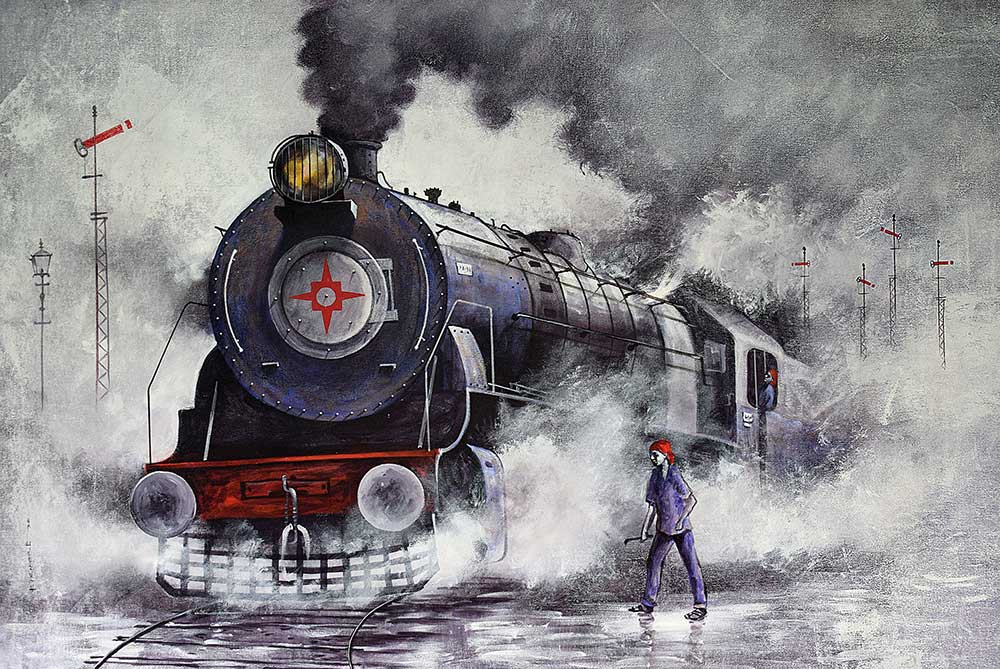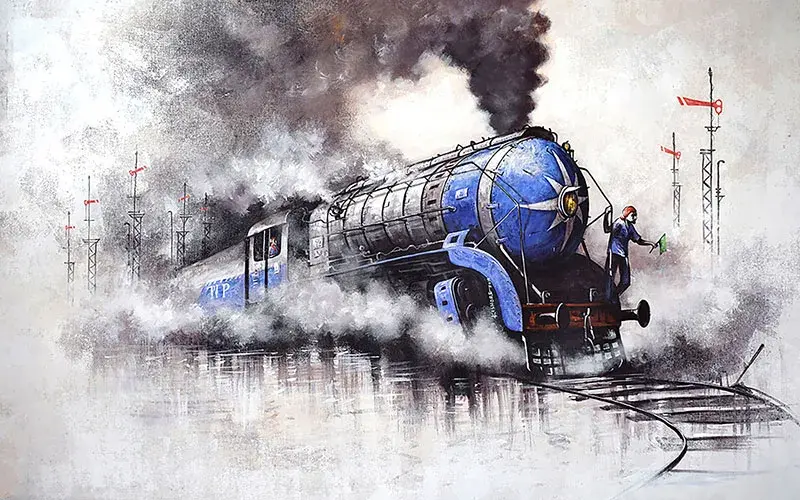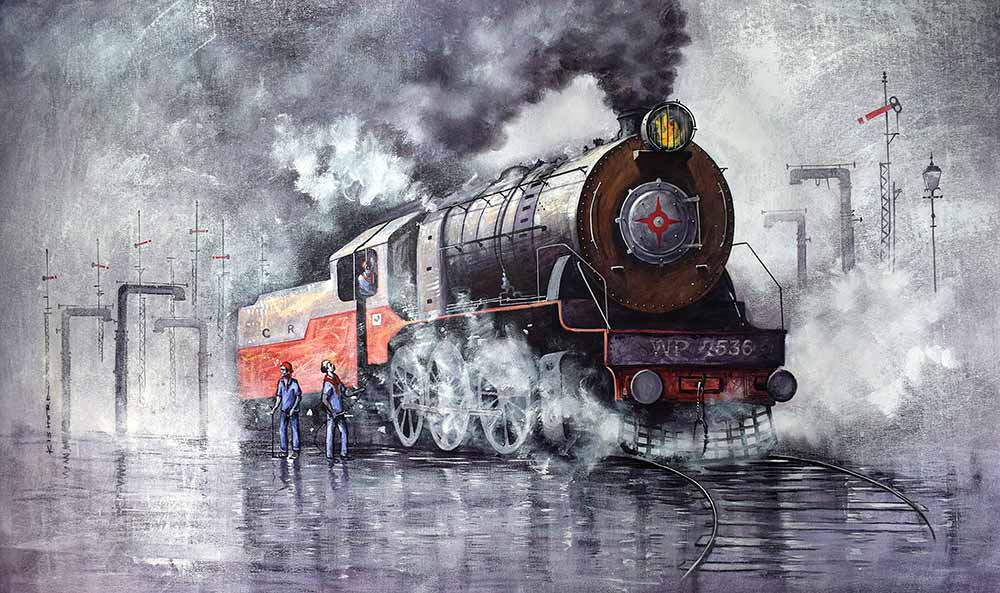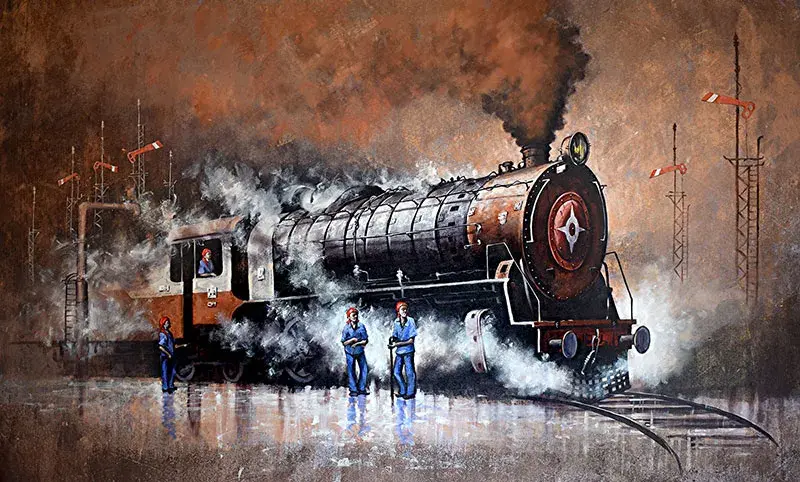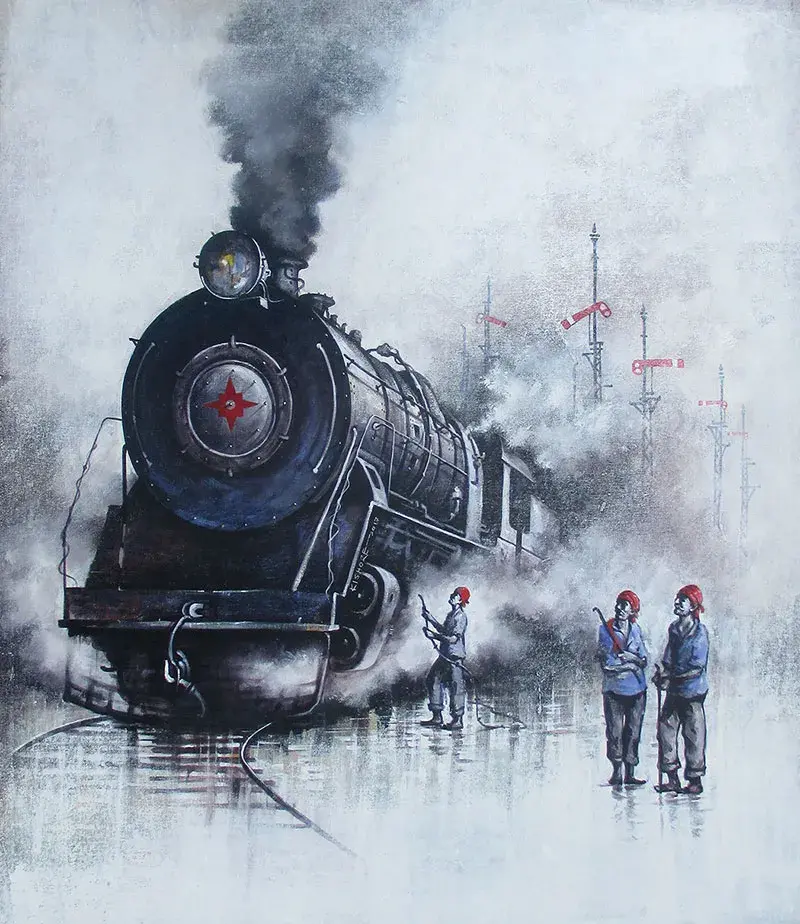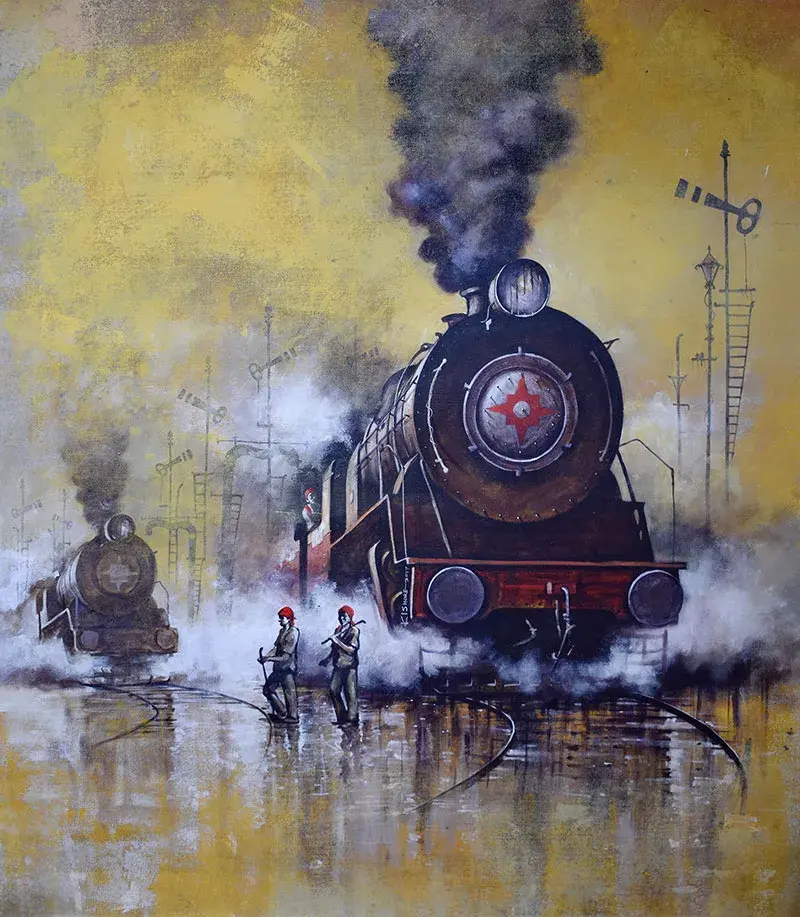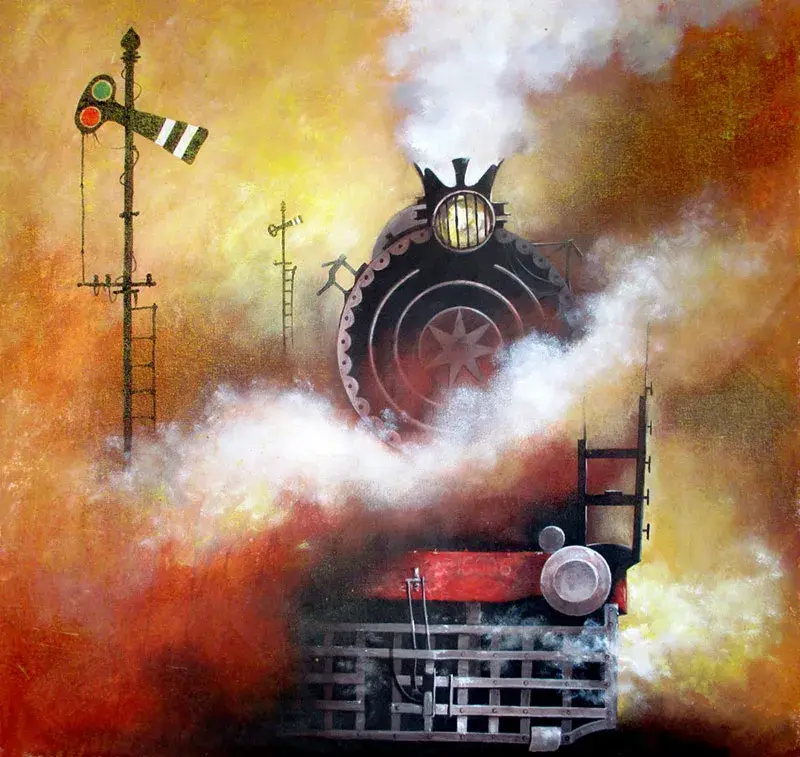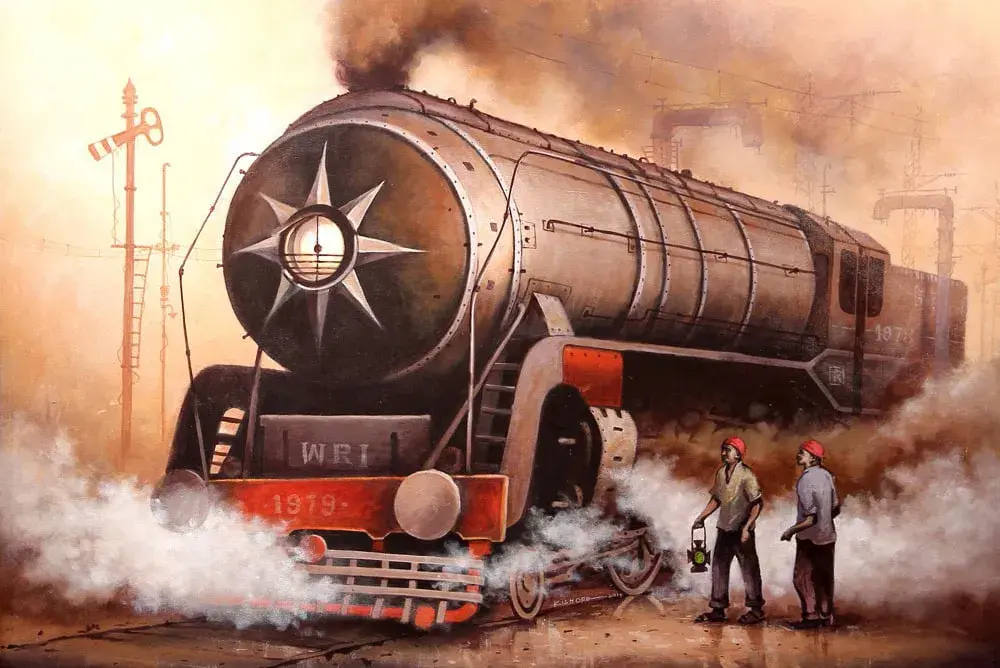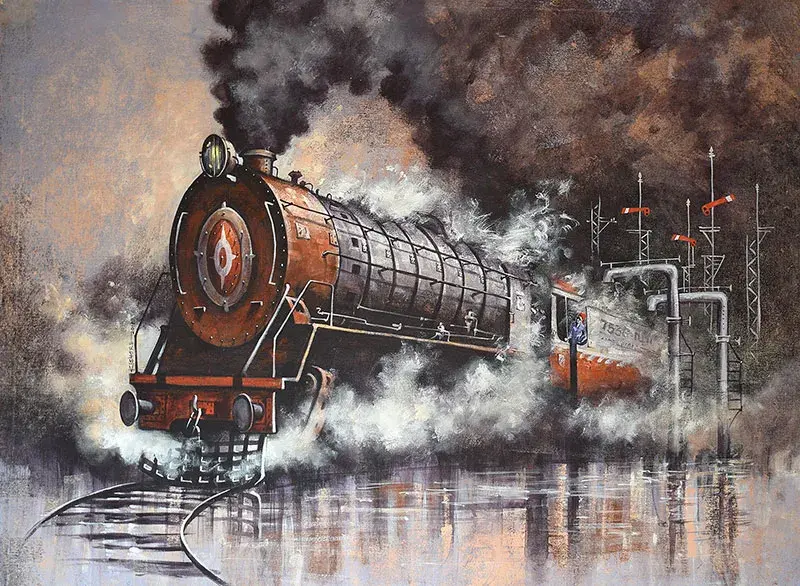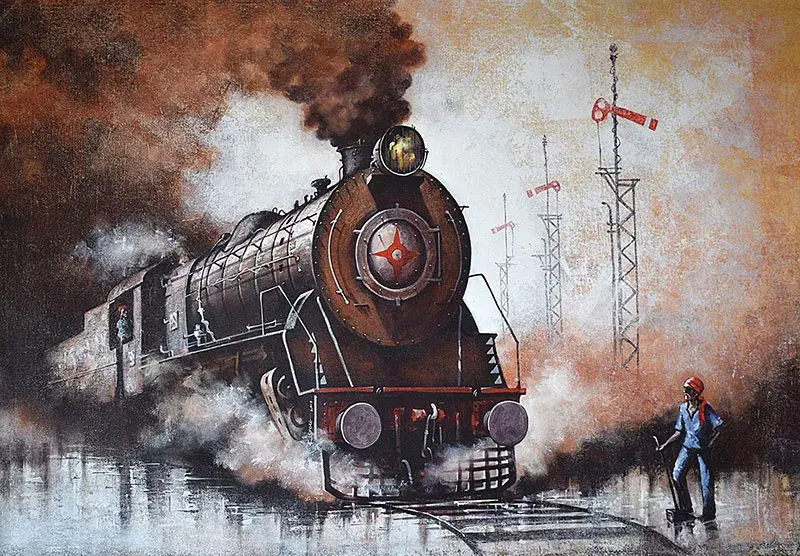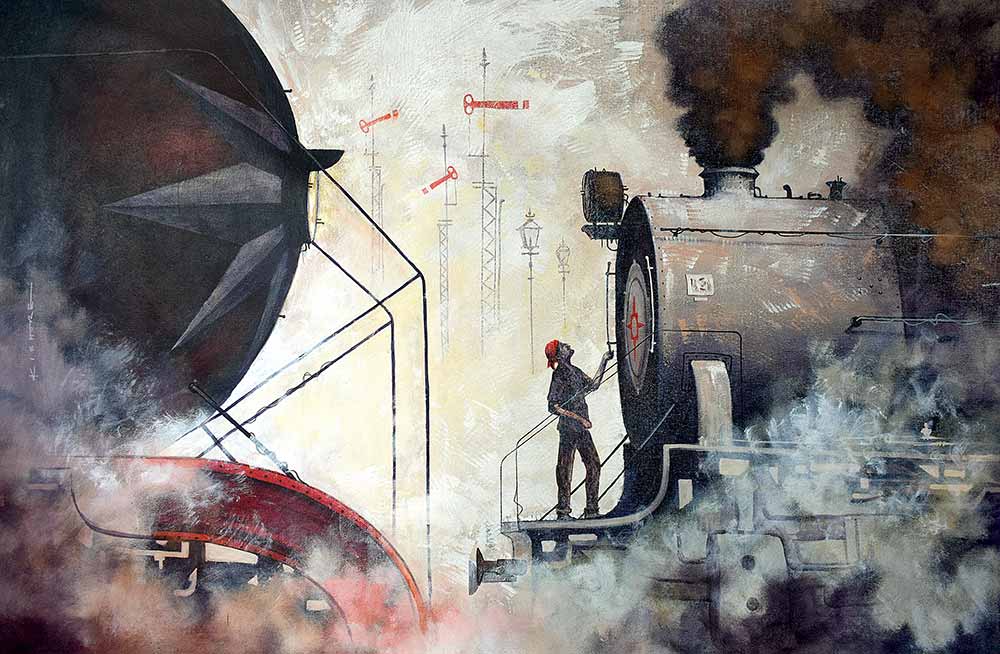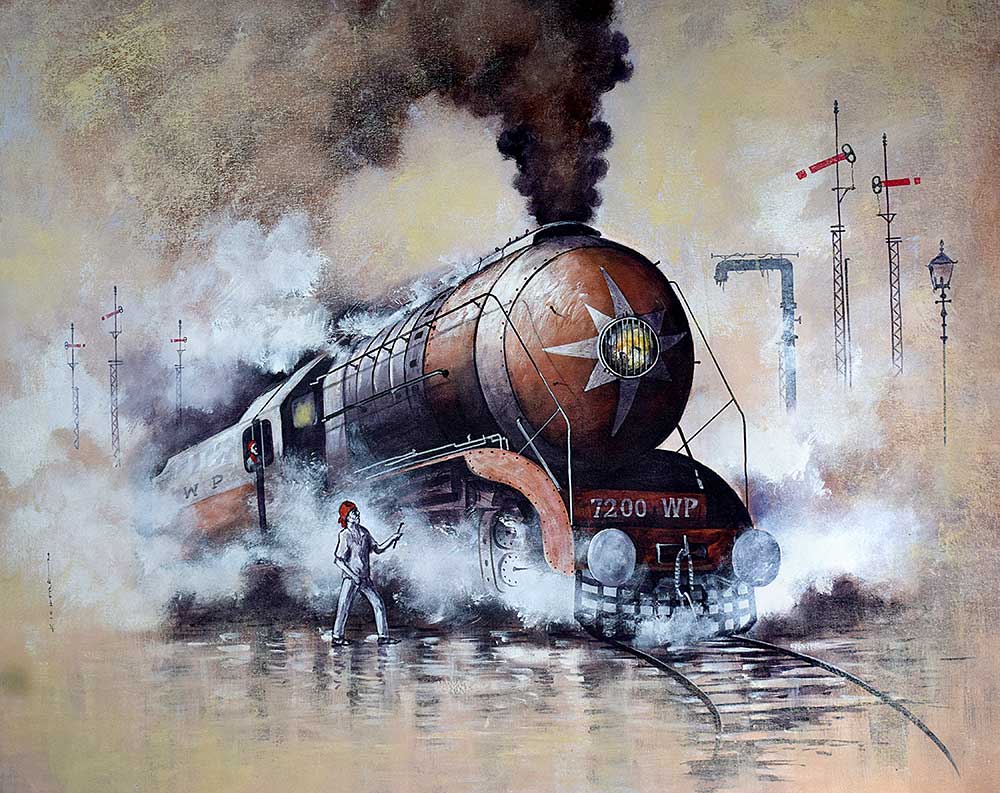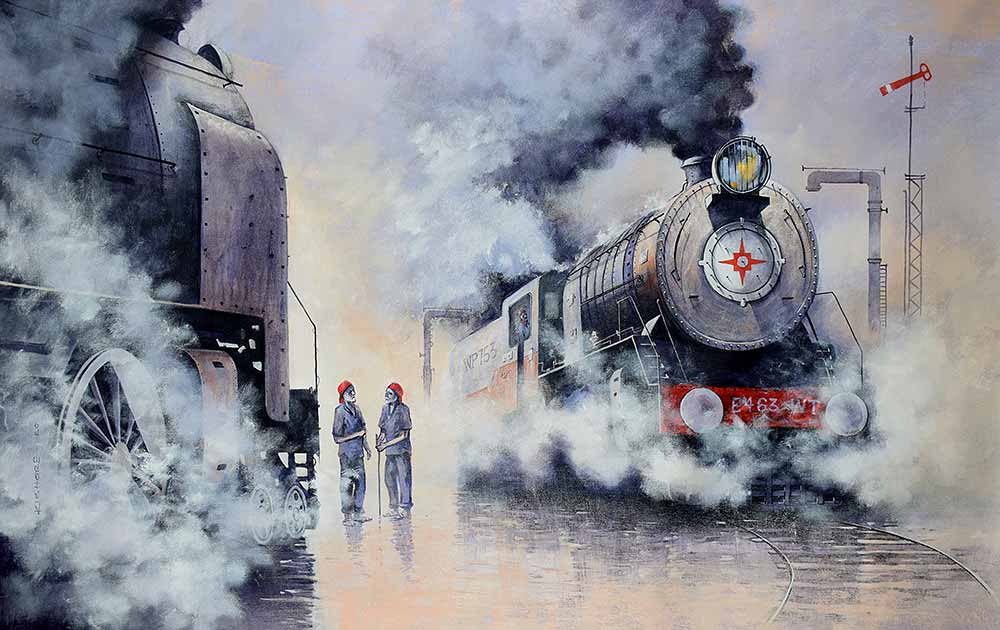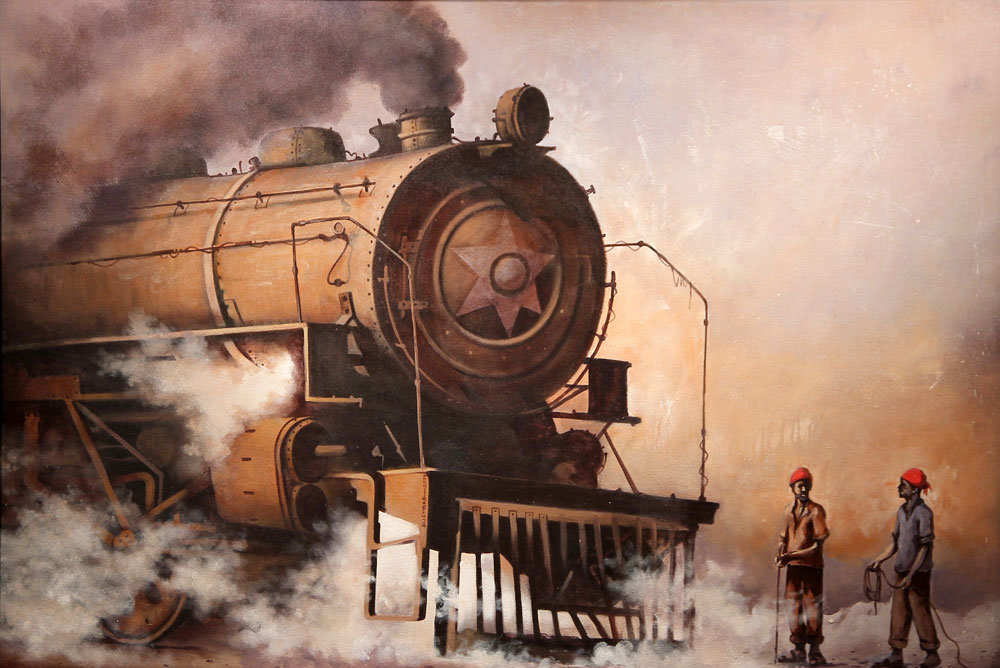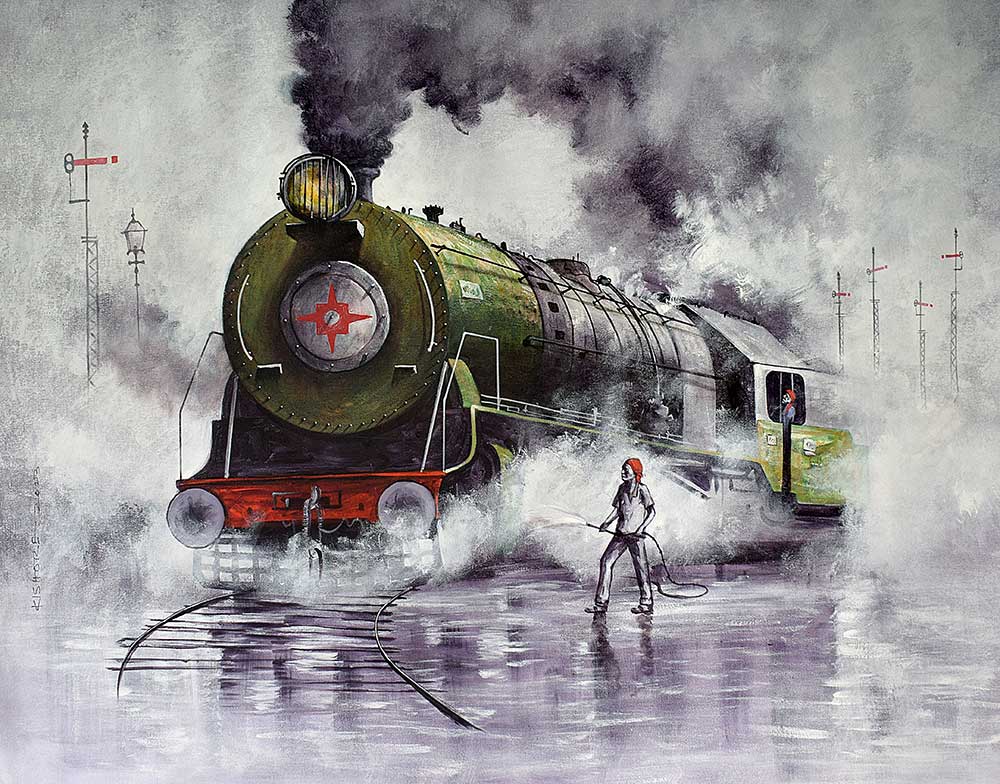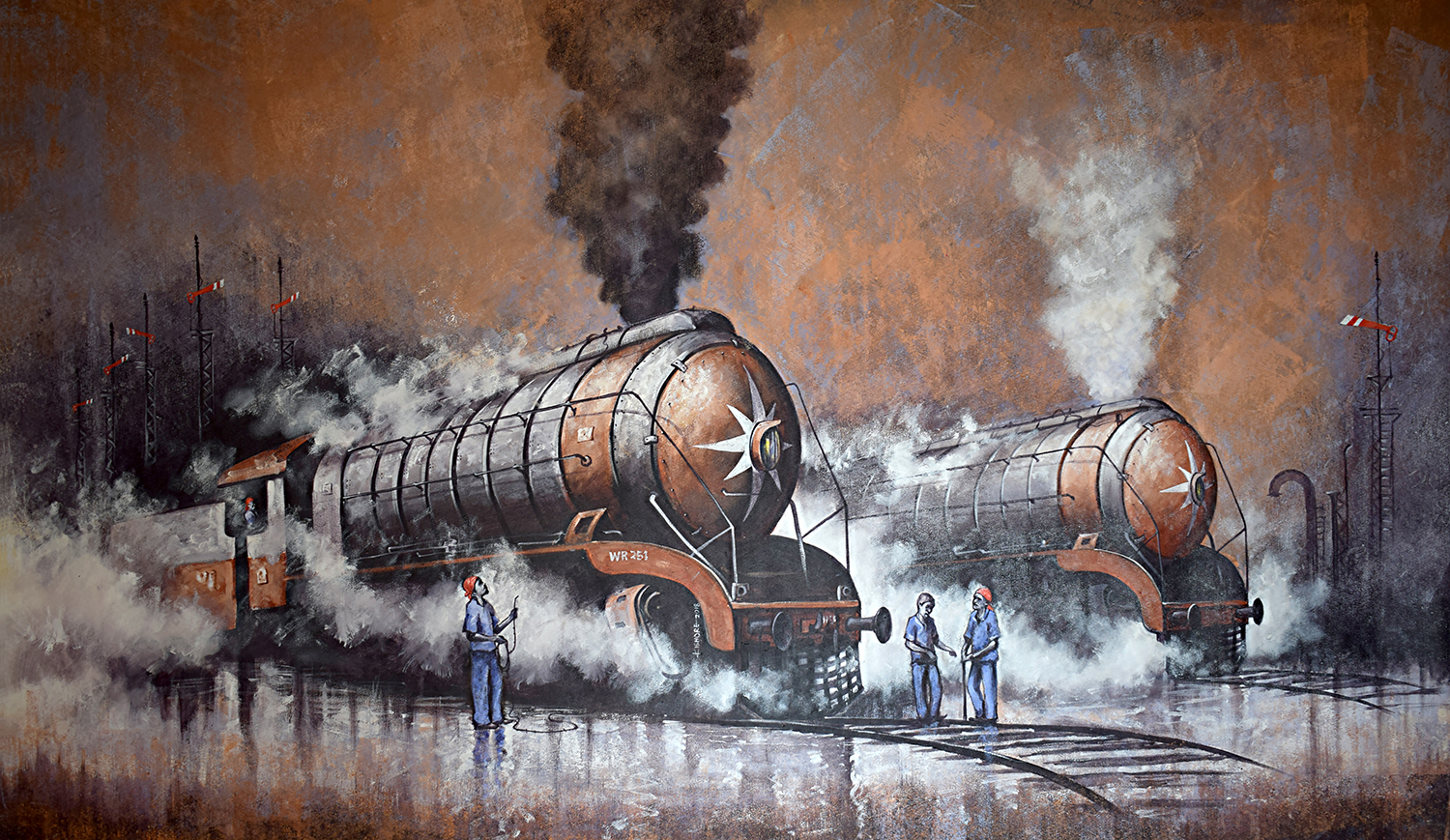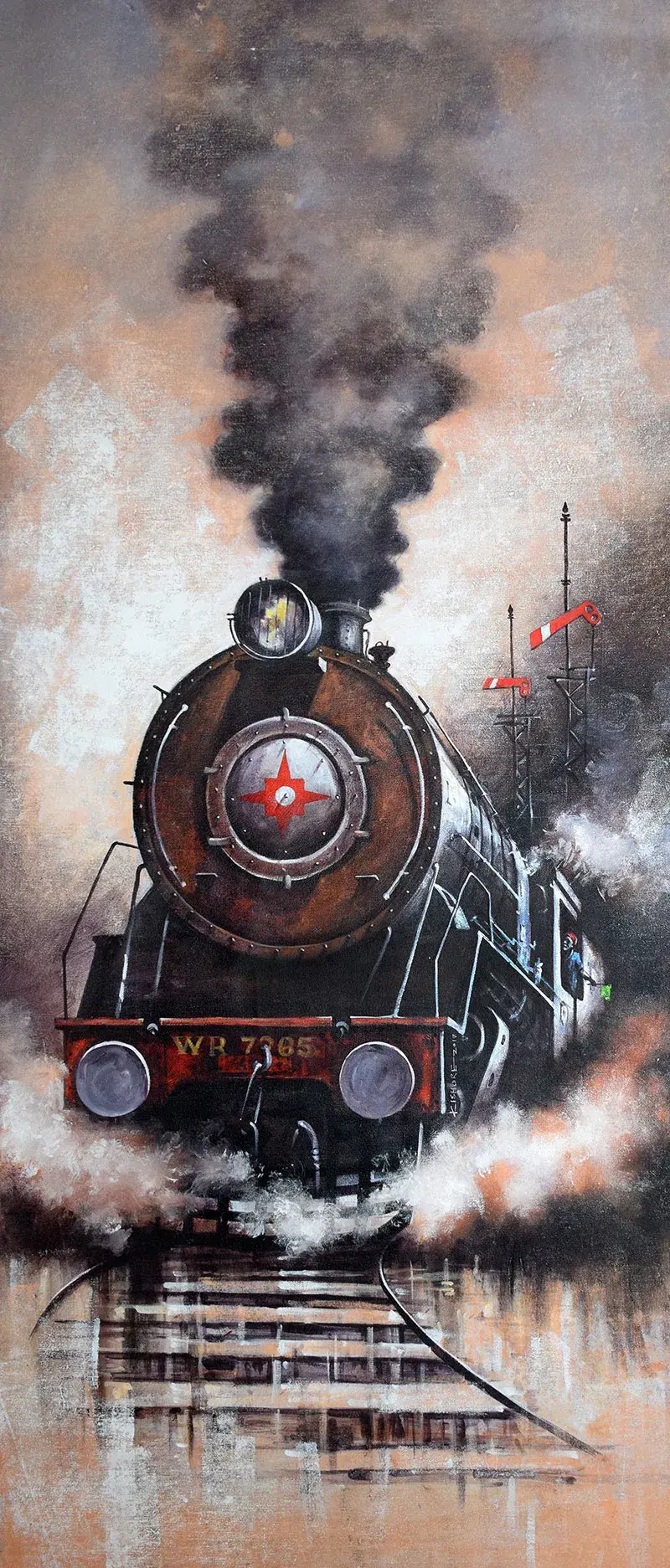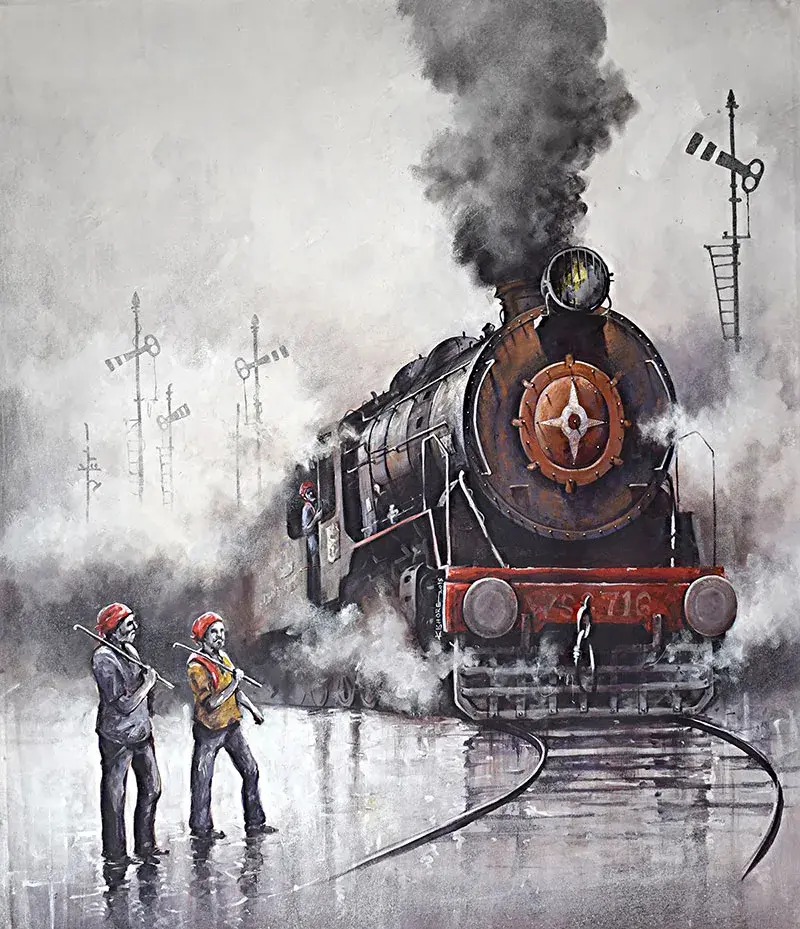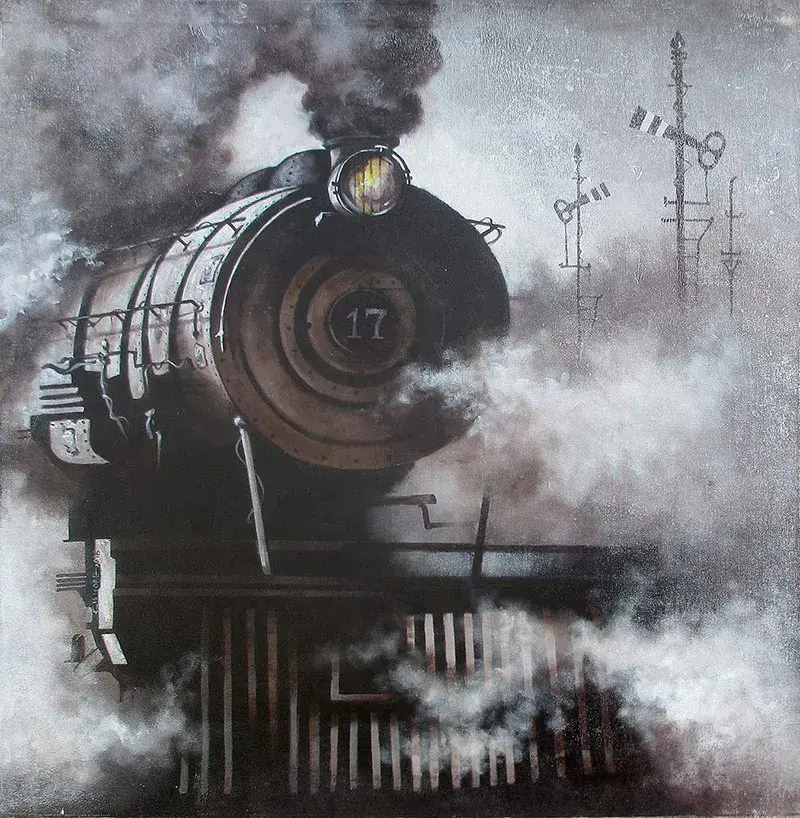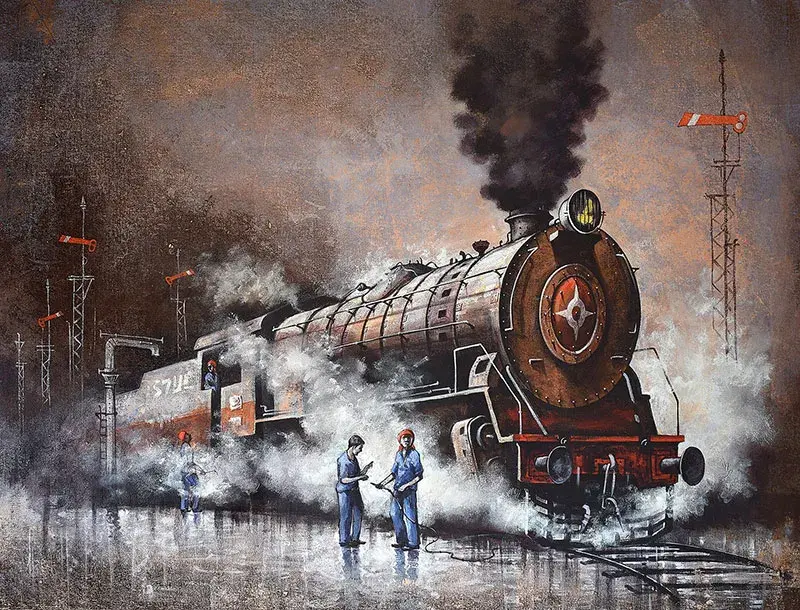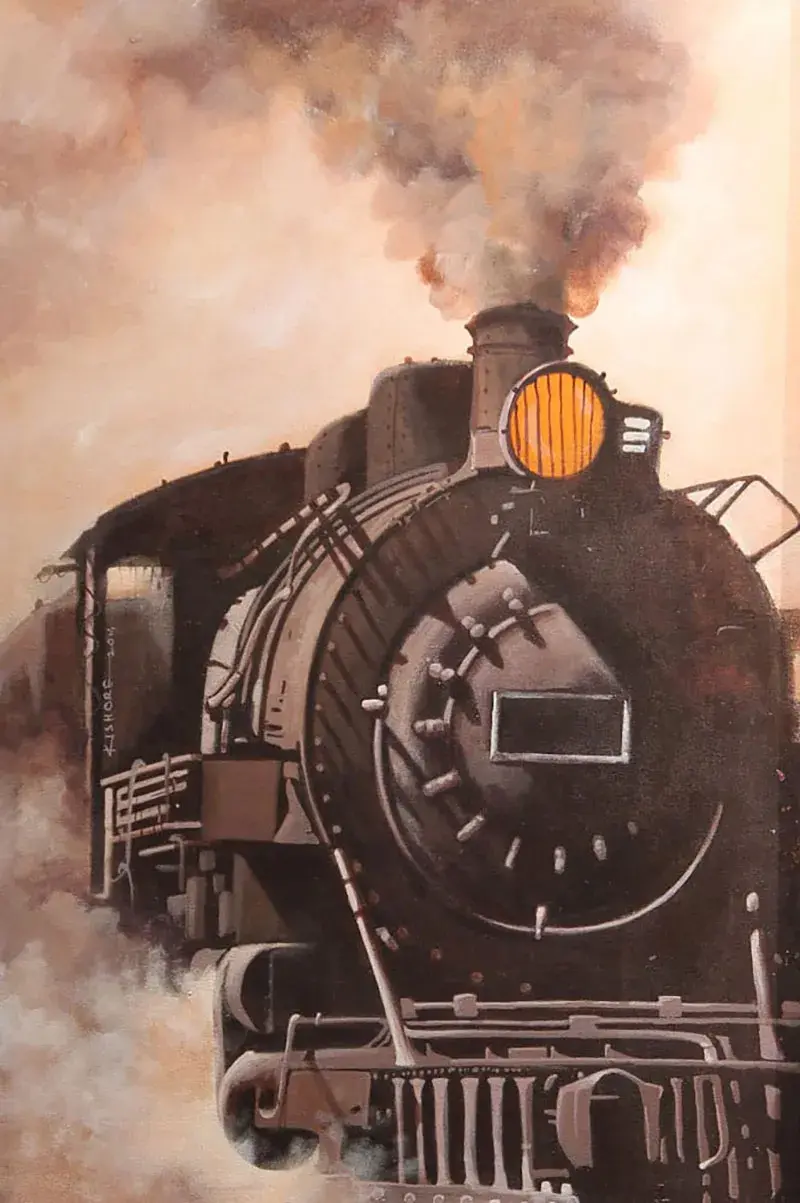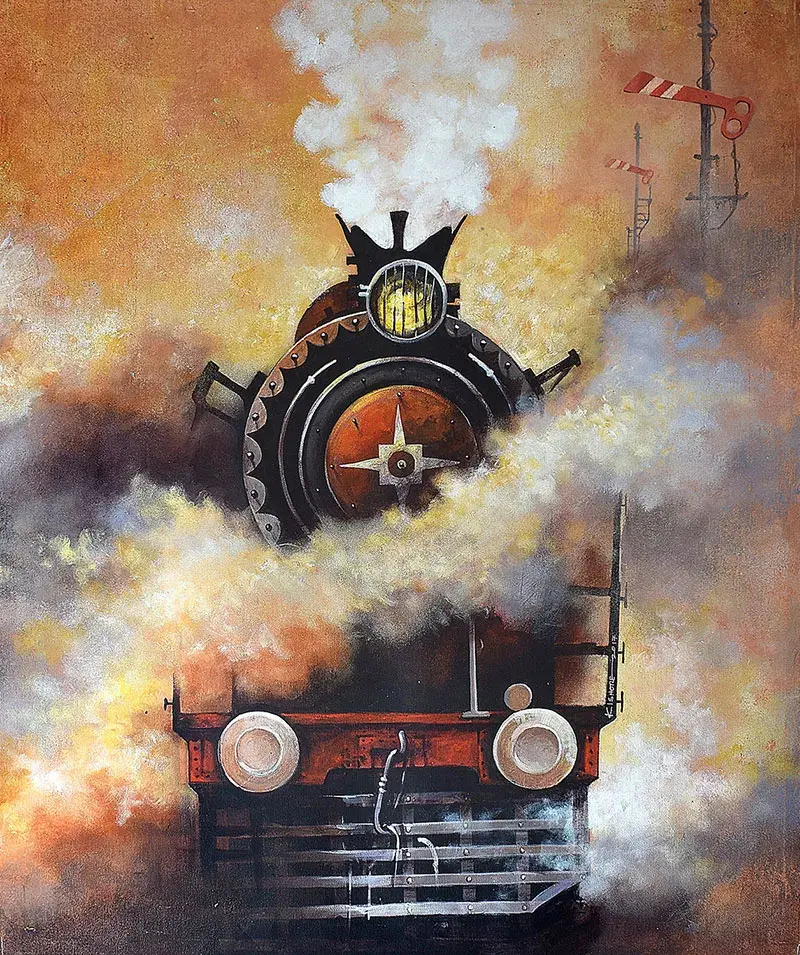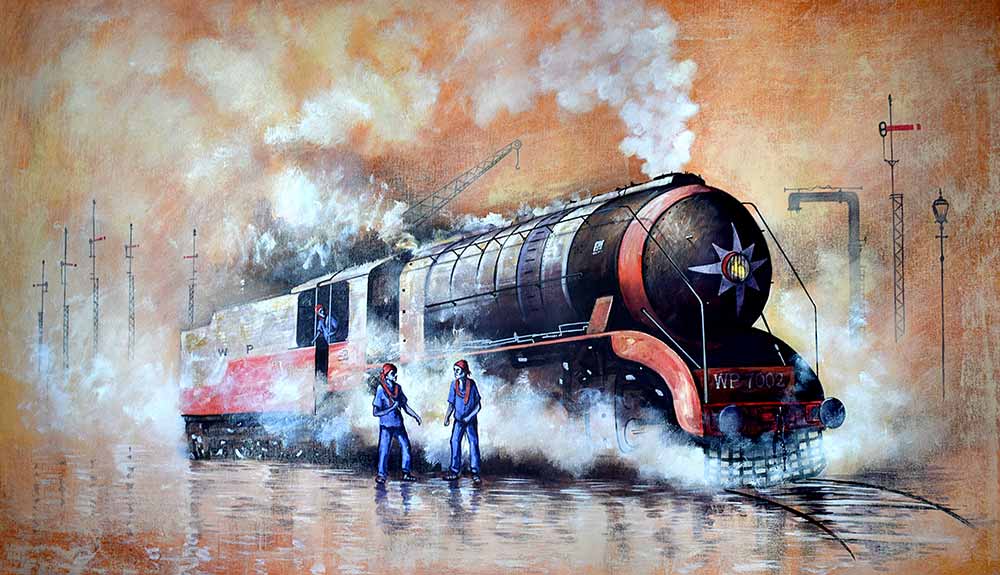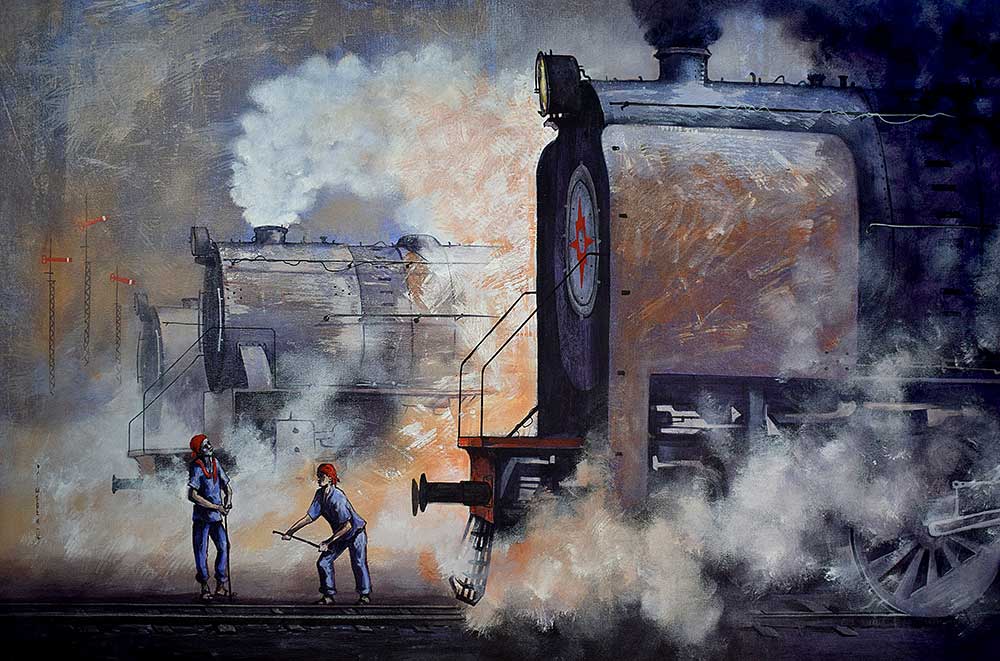Nostalgia Of Indian Steam Locomotives
Size: 29 X 37 in
Steam Locomotive Paintings Carrying the Legacy of Indian Rail and The People Involved
While India’s railways can trace their roots back to the British Raj, they have been more important to the country’s identity and development over the last 150 years. The tracks were first built to boost a government and fill the wallets of foreign investors, but they have now extended to support the country as a whole, becoming a staggeringly large network that may be considered a jewel in India’s cultural and national crown.
Among the painters who have been captivated and made successful attempts to capture the beauty of these trains through the Steam Locomotive paintings, Kishore Pratim Biswas is a well-known name. He has come up with captivating series of Indian steam locomotives that have become part of a very old legacy of Indian Rail.
Railways were affected when newly established Pakistan claimed possession of over 40% of the network during the division of the nation that followed the British exit in 1947. The North Western Railway and the Bengal Assam Railway were two of the major routes that were cut off from the rest of the Indian rail network and divided up. In the anarchy that followed India’s division, mobs attacked trains carrying refugees, damaging tracks in the process.
A few years later, in 1949 and 1950, Indian Railways secured the majority of control over railway franchises and started working towards the achievement of its own destiny. The task of reorganising the network into zones began between 1951 and 1952. In 1976, between Amritsar and Lahore, the Samihauta Express became the first train to run between India and Pakistan. Till then, the use of steam locomotives was ample and many artists from Indian and abroad have come and created their finest works on canvas on these locomotives.
However, in case of Mr. Biswas, his experience with the trains was in his early age. He used to visit the train workshops, studied the trains, as well as the people there. He built a close affinity with the workers of the train workshop, they used to share their food with him along with their own stories. In present days, as Mr. Biswas creates beautiful Steam Locomotive Paintings, his works include these people, working alongside the trains.
Steam locomotives were phased out in the 1980s as a consequence of electrification efforts initiated in response to energy problems in the 1970s. About 4,500 km of track were electrified between 1980 and 1990. Meanwhile, in 1984, the first metro system in India opened in the city of Calcutta.
The 1980s saw growth of the network stall owing to economic stagnation and political upheaval; however, the 1990s saw the opening of the Konkan Railway, a monstrous railway spanning 738 km and connecting the western coast of India to the rest of the country. But the legacy of these steam locomotives lives on, through the Steam Locomotive Paintings coming from the works of famous painters like Kishore Pratim Biswas.

